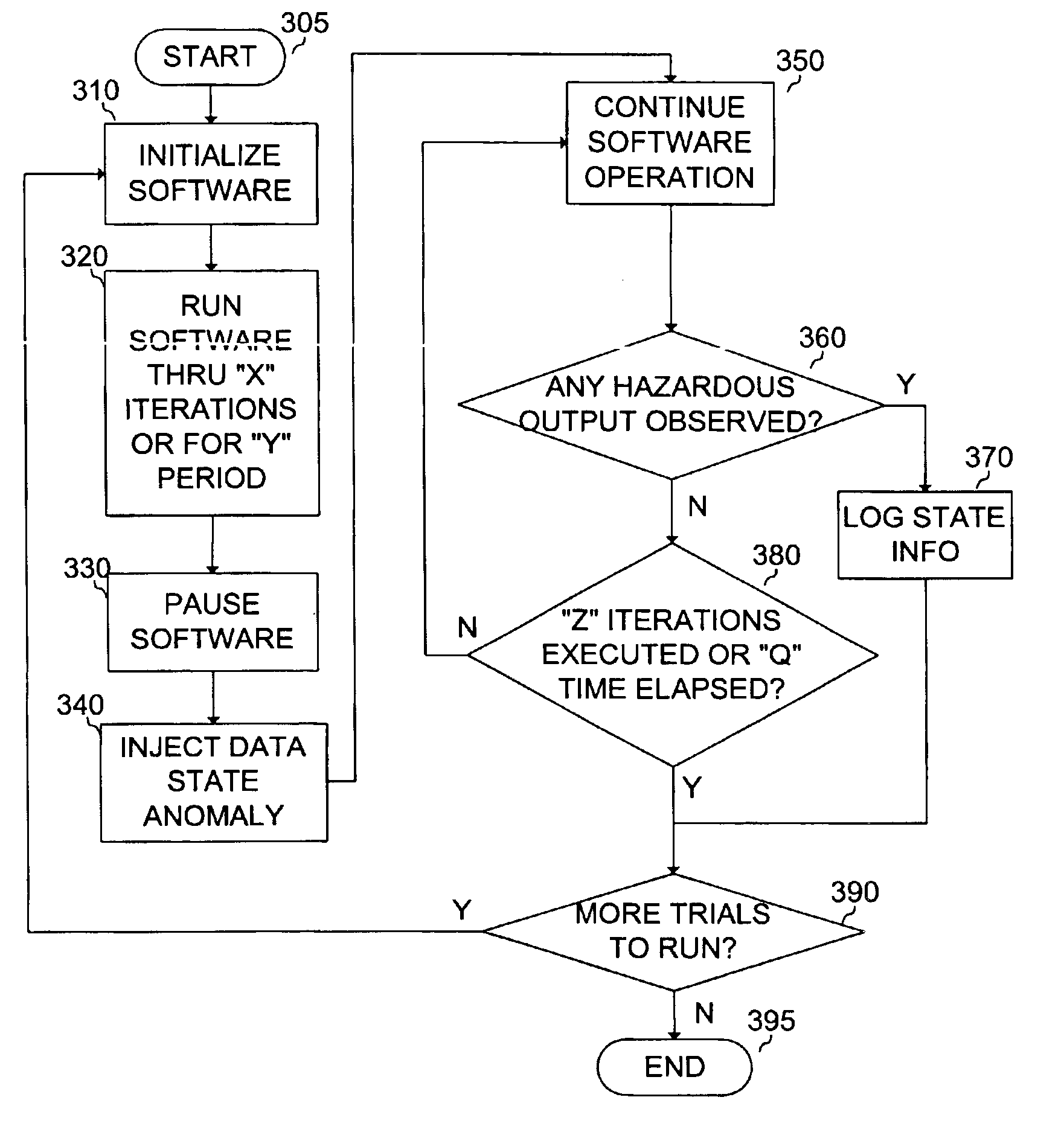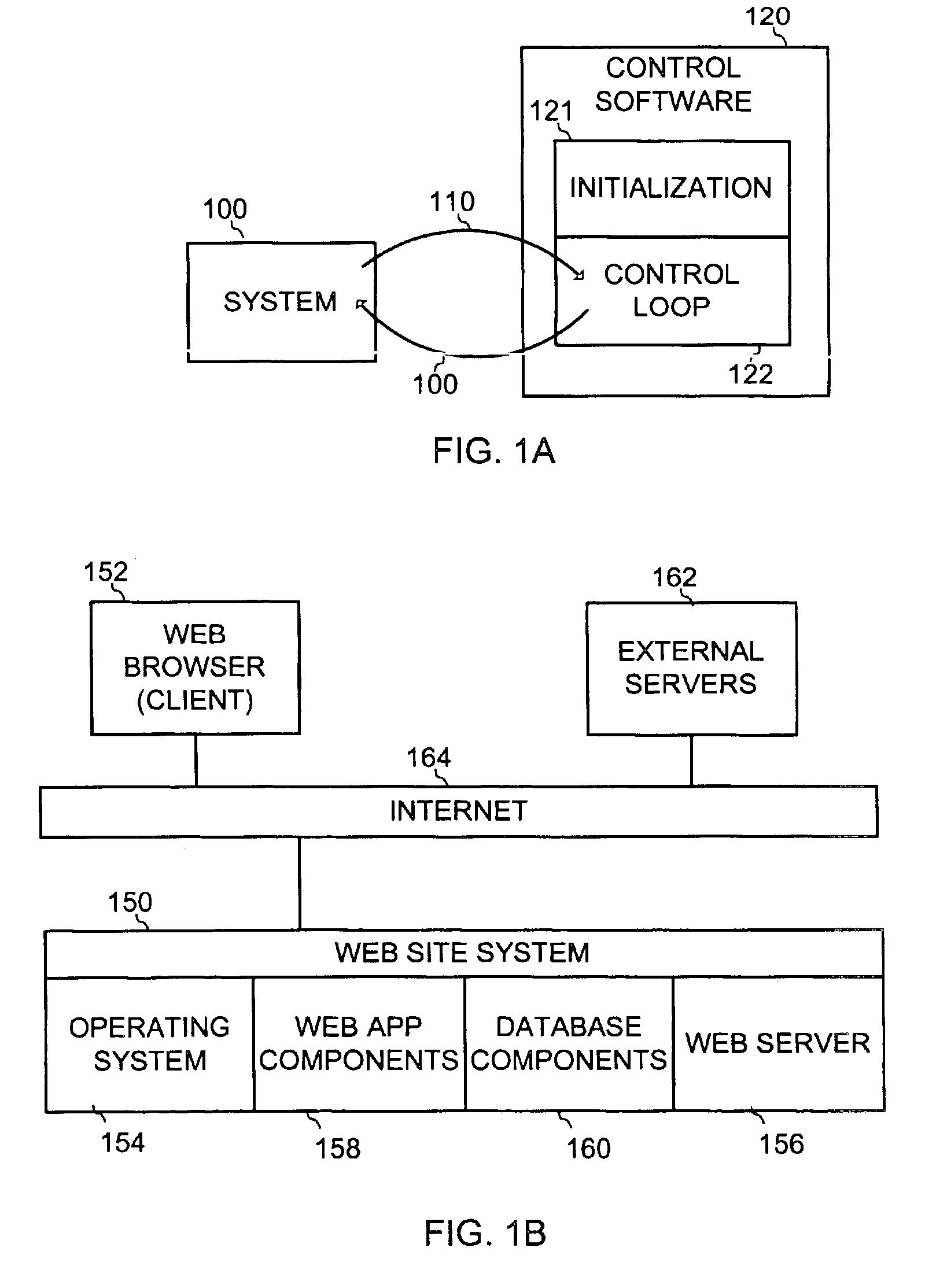Method for reducing catastrophic failures in continuously operating software systems
a software system and continuous operating technology, applied in the field of software testing, can solve problems such as substantial financial harm or loss of customer goodwill
- Summary
- Abstract
- Description
- Claims
- Application Information
AI Technical Summary
Benefits of technology
Problems solved by technology
Method used
Image
Examples
Embodiment Construction
[0026]For the purposes of the present invention, the term “feedback state” may refer to state information calculated from earlier control system software executions. The process of using information from previous executions on a current computation is handled by a feedback mechanism built into the software or device that the software controls. In addition to stored state information, the control software may be fed information from the environment into which the software is embedded.
[0027]As the control software continues to run, feedback states may become corrupted, and the present invention seeks to characterize the extent to which such corruption may affect continuously operating software and the systems the software controls. The present invention utilizes a technique known as fault injection to induce state corruption. Fault injection generally relies on two event class definitions. First, there are those events that will be forcefully injected into application software states ...
PUM
 Login to View More
Login to View More Abstract
Description
Claims
Application Information
 Login to View More
Login to View More - R&D
- Intellectual Property
- Life Sciences
- Materials
- Tech Scout
- Unparalleled Data Quality
- Higher Quality Content
- 60% Fewer Hallucinations
Browse by: Latest US Patents, China's latest patents, Technical Efficacy Thesaurus, Application Domain, Technology Topic, Popular Technical Reports.
© 2025 PatSnap. All rights reserved.Legal|Privacy policy|Modern Slavery Act Transparency Statement|Sitemap|About US| Contact US: help@patsnap.com



